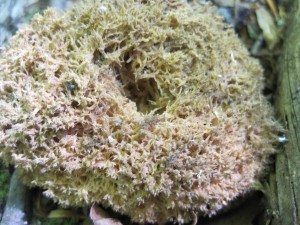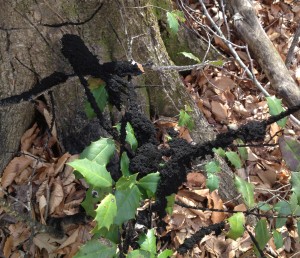(Video: Woolly aphids dancing on a beech tree at the Smithsonian Environmental Research Center. Credit: Tyler Bell/SERC)
Any creature with the word “blight” in its name can hardly escape being labeled a pest. Beech blight aphids are no exception. Like mosquitoes of the tree world, aphids have a vampirical tendency to suck the sap out of trees they colonize, and–while they do not usually kill the entire tree–they can take out some of its smaller branches.
But like all names, pest is a matter of perspective. And aphids have evolved some redeeming qualities as well. Not least is their peculiar ability to dance in the face of danger.
This quirk has earned them a more endearing nickname: the boogie-woogie aphid. Whenever aphids feel threatened, they raise their rear ends and sway, sometimes hundreds or thousands at a time. Up close their abdomens resemble white feather dusters. It’s a defensive dance meant to ward off predators. But in a flip of the natural order, it’s generally the children–not the adults–who do the defending. If larger creatures like moth larvae get too close, young aphid nymphs spin around and sting the predators with the same stylet mouth pieces they use to drain the beech branches.
And while aphids mean death for small tree branches, for other creatures they give life. After drinking the tree’s sap, aphids excrete it as sweet-smelling honeydew. Ants and other insects flock to it for the nutritious sugar. So do fungi, which rapidly colonize the honeydew and turn it into black sooty mold. Unlike the aphids, the fungi do not penetrate the tree’s surface. Some researchers doubt whether beech blight aphids have any serious effect on the tree’s health, other than producing “vast amounts of aesthetically displeasing sooty mold.” Which would make the name beech blight aphid, though technically accurate, a bit unjust.
As one reader pointed out, “woolly aphid” and “beech blight aphid” do not mean the same thing. “Beech blight aphid” refers to the species Grylloprociphilus imbricator. “Woolly aphid” is a broader name that includes beech blight aphids and other aphids that secrete waxy threads to resemble wool. The video above shows woolly aphids that are probably beech blight aphids.




These are misidentified as beech blight aphids. They are woolly aphids.